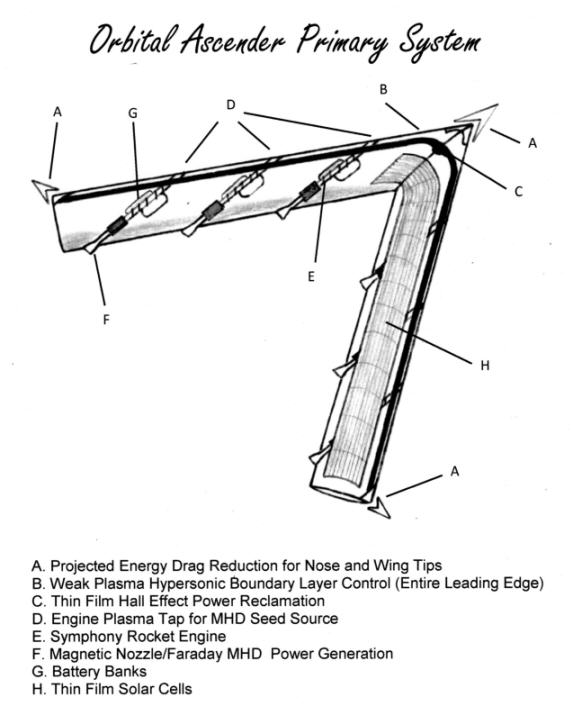FutureSpaceTourist
ACCESS: Top Secret
- Joined
- 10 March 2010
- Messages
- 590
- Reaction score
- 34
The recent near space manoeuvring thread features work by J P Aerospace and got me thinking that their airship to orbit (ATO) programme deserves its own thread.
ATO is one of the more original (many say impossible!) ideas for getting to LEO. Following ATO description is taken from attached PDF:
Here's an animation of this:
http://www.youtube.com/watch?v=V4dsvreDTsI
A couple of big technical issues spring to mind:
But even if the third part of the architecture proves infeasible, I think parts 1 and 2 still offer some intriguing possibilities.
J P Aerospace are about half-way through a 30+ year programme, according to a recent Space Show interview. The interview Q&A includes an interesting discussion of JP's response to people who say ATO is impossible.
Note that J P Aerospace do regularly fly (balloons) in the 100,000 ft region and were responsible for lifting and filming a balsa wood chair to near space in Toshiba advert a few months back. Details on the filming and a making of video are at:
http://cosmiclog.msnbc.msn.com/archive/2009/11/20/2133259.aspx
http://www.youtube.com/watch?v=g2pVRHzs9U8
For more background on ATO see JP's book Floating to Space, Apogee Books, 2008, ISBN: 978-1-894959-73-5.
My heart says I really wish they succeed, my head says the obstacles are formidable. Sorry JP, I'm putting this in Space Projects not Aerospace (for now ...).
ATO is one of the more original (many say impossible!) ideas for getting to LEO. Following ATO description is taken from attached PDF:
[It] is a three-part architecture for using lighter-than-air vehicles to reach space:
- The first part is an atmospheric airship. It will travel from the surface of the Earth to 140,000 feet. The vehicle is operated by a crew of three and can be configured for cargo or passengers. This airship is a hybrid vehicle using a combination of buoyancy and aerodynamic lift to fly. It is driven by propellers designed to operate in near vacuum.
- The second part of the architecture is a suborbital space station. This is a permanent, crewed facility parked at 140,000 feet. These facilities, called Dark Sky Stations (DSS), act as the way stations to space. The DSS is the destination of the atmospheric airship and the departure port for the orbital airship. Initially, the DSS will be the construction facility for the large orbital vehicle.
- The third part of the architecture is an airship/dynamic vehicle that flies directly to orbit. In order to utilize the few molecules of gas at extreme altitudes, this craft is big. The initial test vehicle is 6,000 feet (over a mile) long. The airship uses buoyancy to climb to 200,000 feet. From there it uses electric propulsion to slowly accelerate. As it accelerate it dynamically climbs. Over several days it reaches orbital velocity.
Here's an animation of this:
http://www.youtube.com/watch?v=V4dsvreDTsI
A couple of big technical issues spring to mind:
- Where is the power going to come from to achieve orbital velocity?
- How will they overcome effects of drag on such large vehicles?
But even if the third part of the architecture proves infeasible, I think parts 1 and 2 still offer some intriguing possibilities.
J P Aerospace are about half-way through a 30+ year programme, according to a recent Space Show interview. The interview Q&A includes an interesting discussion of JP's response to people who say ATO is impossible.
Note that J P Aerospace do regularly fly (balloons) in the 100,000 ft region and were responsible for lifting and filming a balsa wood chair to near space in Toshiba advert a few months back. Details on the filming and a making of video are at:
http://cosmiclog.msnbc.msn.com/archive/2009/11/20/2133259.aspx
http://www.youtube.com/watch?v=g2pVRHzs9U8
For more background on ATO see JP's book Floating to Space, Apogee Books, 2008, ISBN: 978-1-894959-73-5.
My heart says I really wish they succeed, my head says the obstacles are formidable. Sorry JP, I'm putting this in Space Projects not Aerospace (for now ...).

